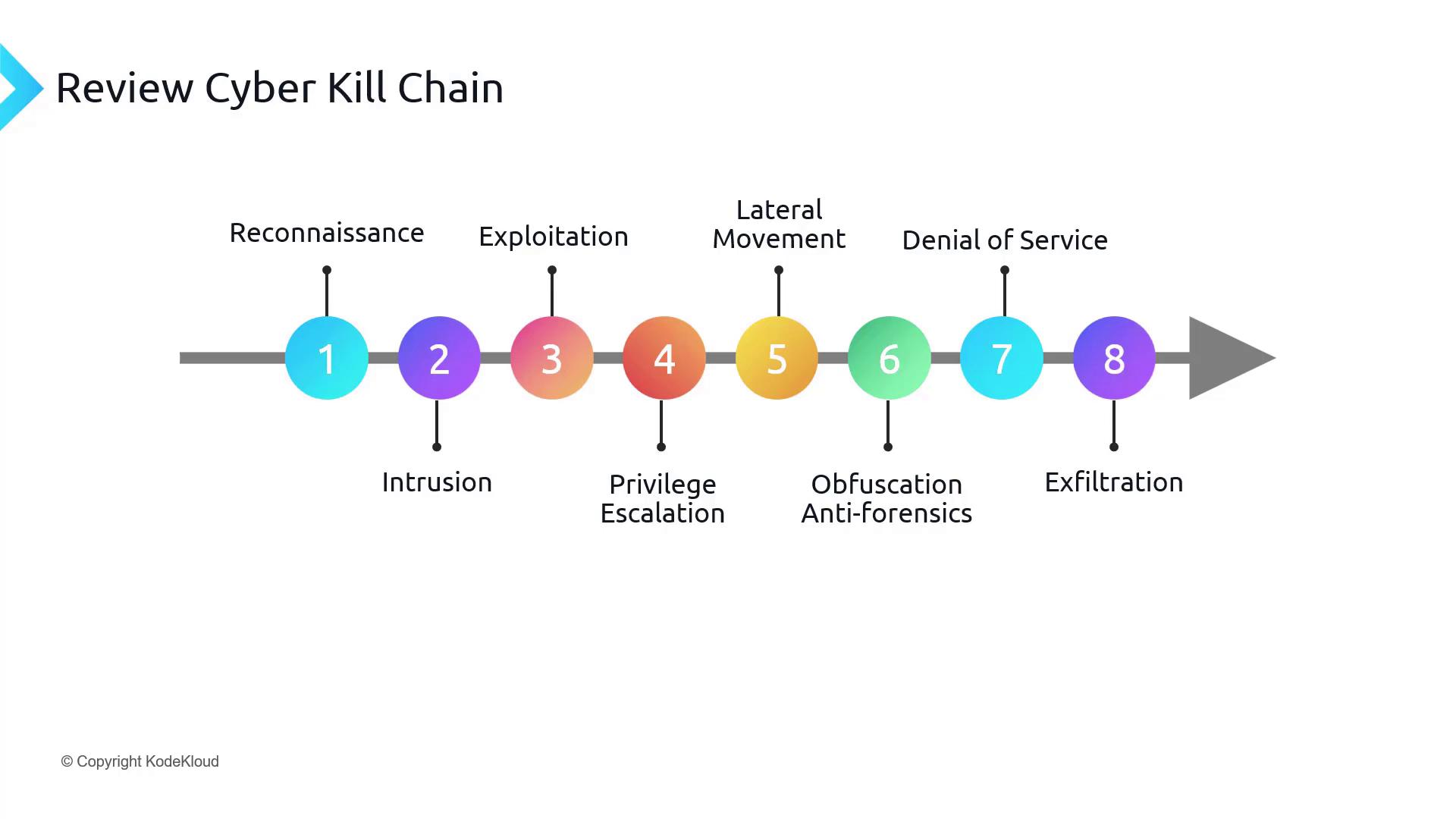Microsoft Azure Security Technologies (AZ-500)
Microsoft Defender for Cloud
Review the cyber kill chain
In this article, we explore the Cyber Kill Chain—a comprehensive framework that outlines each stage of a cyber attack. This model breaks down the entire attack lifecycle, from the attacker’s initial reconnaissance to the final data exfiltration. Understanding each stage helps organizations better prepare, detect, and mitigate potential threats.
Stages of the Cyber Attack Lifecycle
Reconnaissance
The attacker gathers intelligence about the target, identifying vulnerabilities and potential entry points.Intrusion
The attacker penetrates the target’s defenses to establish an initial foothold within the environment.Exploitation
With the collected intelligence and initial access, the attacker further compromises the system.Privilege Escalation
The attacker increases their level of access, enabling control over additional resources and sensitive data.Lateral Movement
Once initial access is secured, the attacker moves laterally within the network in search of valuable assets.Obfuscation and Antiforensics
The attacker conceals their activities to hinder detection and complicate forensic efforts.Denial of Service (DoS)
To divert attention or disrupt operations, the attacker may launch a DoS attack affecting system availability.Exfiltration
In the final phase, the attacker extracts valuable data from the compromised system.

Key Insight
Understanding each phase of the Cyber Kill Chain is essential for building effective defense strategies. By identifying and monitoring these stages, organizations can detect early signs of intrusion and prevent further compromise.
Enhancing Security with Microsoft Defender for Cloud
The Cyber Kill Chain framework provides a high-level overview of typical attack stages, which is crucial for developing robust countermeasures. Tools such as Microsoft Defender for Cloud proactively monitor, detect, and respond to these attack phases to safeguard your digital assets. With its comprehensive notification system, you can pinpoint the stage at which an attacker was halted—whether during exploitation or at the denial of service point.
By integrating Microsoft Defender for Cloud into your security strategy, you enhance your overall security posture and gain actionable insights into the progression of potential cyber threats.
For additional guidance on improving your security measures and understanding threat patterns, refer to relevant resources in the Microsoft Defender for Cloud documentation.
Watch Video
Watch video content